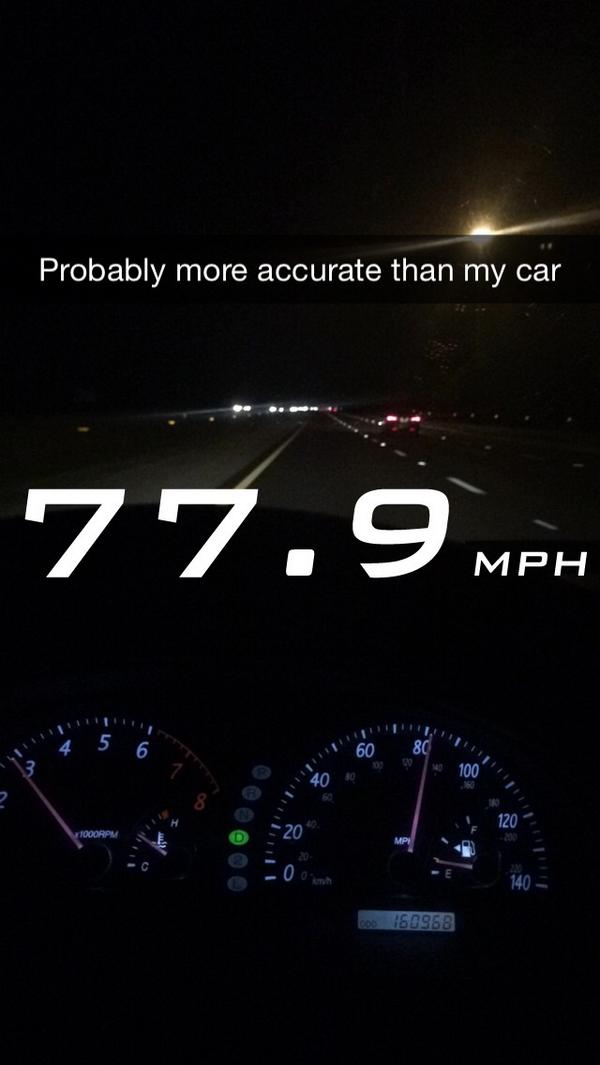Snapping Your Speed? Let’s Slow Down…
By Robert Maxwell Campbell, Staff Writer
Snapchat, founded by Evan Spiegel just over four years ago, has transformed from merely a “sexting app” to a social media pipeline comparable to the likes of Facebook, Instagram, and Twitter.[1] In fact, in 2016, Snapchat is expected to exceed 200 million users, a number that Spiegel and his co-founders could never have predicted when ascertaining the idea at Stanford University in 2011.[2]
Only a year after its launch, Facebook’s CEO Mark Zuckerberg reportedly attempted to buy the app for $3 billion[3], an offer that was ultimately turned down. Regardless, if Zuckerberg is knocking on your door, you’re probably doing something right.
The idea behind Snapchat is relatively simple. A user can send pictures or short videos to friends, while incorporating different filters, effects, text captions, and drawings. However, unlike traditional social media platforms, these “snaps” only last up to ten seconds, and are then gone forever once viewed. In 2013, Snapchat added “stories” to the app, now allowing users to create a narrative of photos or short videos strung together, which are available to all of the user’s followers for twenty-four hours.[4]
Among other intricacies of Snapchat, the forever-changing and often socially relevant filters help the app maintain an ultramodern feeling. These filters range from merging your face with a cartoon animal’s to incorporating a logo representing the city where the snap occurred. One of the most controversial filters Snapchat offers, though, is one that displays how fast you’re currently traveling when the picture or video was taken.
This becomes even more worrisome when taking into account that Snapchat primarily targets teenagers. As by August 2014, 40% of 18 year olds in the United States were using Snapchat on a daily basis.[5] These same 18 year olds are generally new and inexperienced drivers who sometimes use the filter to “brag” about how fast they are going.
“You want to see how fast you can get, so when you get to open lanes, you just kick it,” said Shawn Bradley from Burlington, New Jersey.[6]
It’s not just teenagers, though. We’ve all seen it-a Snapchat Story of a friend driving on the highway, lip-syncing the wrong words to Stacy’s Mom, with 100 MPH flashing across the screen. And we’ve all had the same thought…”Damn, he must be cool.”
While Snapchat hasn’t caught up in the field of litigation, most snaps fall into the standard prohibition against texting and driving in Pennsylvania.[7] The dangers of texting and driving are widely apparent, and this “MPH filter” creates the greater possibility for a dangerous driving experience. While unintentional, as these filters aren’t designed to be utilized while operating a vehicle, even giving warning not to use them in that fashion, their existence alone, coupled with Snapchat’s teenage-based target market, creates another potential distraction for new drivers.
Under 75 Pa.C.S.A. § 1621, taking effect in Pennsylvania in 2014, a driver, aside from emergency situations under (c), is prohibited from engaging in texting while driving a commercial motor vehicle.[8] Texting, according to the statute, “includes, but is not limited to, short message service, e-mailing, instant messaging, a command or request to access an Internet web page, pressing more than a single button to initiate or terminate a voice communication using a mobile telephone or engaging in any other form of electronic text retrieval or entry, for present or future communication.”[9]
Considering this definition of texting, it is uncertain whether taking a single photo would qualify under this prohibition, though “[a]ny time the eyes are diverted from the road and down to the palm of the hand [or to a camera,] there is an increased risk of a rear end accident or any type of car accident in general.”[10] Nonetheless, typing the accompanying text that typically goes with a standard snap would certainly fit the definition.
On December 20, 2015, a Philadelphia woman was speeding when her car hit a parked tractor-trailer, taking her life and the lives of two passengers.[11] There has been evidence pointing to the use of Snapchat just minutes before the crash, as several sources confirmed that the driver had been “snapping” her speed using the MPH filter.[12] Ethe Hill, the mother of one of the victims, believes that this filter is essentially encouraging people to drive faster.[13]
While Snapchat’s role in the accident was never confirmed, and there has yet to be a court case in which Snapchat has been determined to be the cause of a car accident, the dangers associated with this app, and especially the MPH filter, are discernible. Moreover, they typically fall under the standard prohibition against texting and driving in Pennsylvania and are illegal.
So, in total, if you feel the need to perform a terrible rendition of Stacy’s Mom in the car (isn’t that song like 12 years old?), just make sure you’re in the passenger seat.
[1] Nick Bilton, “Disruptions: Indiscreet Photos, Glimpsed Then Gone,” New York Times, May 6, 2012, http://bits.blogs.nytimes.com/2012/05/06/disruptions-indiscreet-photos-glimpsed-then-gone/?_r=1
[2] David Azizi, “How Many Car Accidents Has Snapchat Cause?” The Law Officers of David Azizi, January 7, 2015 https://www.davidazizipersonalinjury.com/car-accidents-snapchat-caused/
[3] Jeff Bercovici, “Facebook Tried To Buy Snapchat For $3B In Cash. Here’s Why,” Forbes.com, November, 13, 2013 http://www.forbes.com/sites/jeffbercovici/2013/11/13/facebook-wouldve-bought-snapchat-for-3-billion-in-cash-heres-why/#665b632079ed
[4] Snapchat Blog, “Surprise!” October 3, 2013, http://snapchat-blog.com/post/62975810329/surprise
[5] Macello Ballve, “Snapchat’s Explosive Growth Among Teens and Millennials Means It’s Emerging As a Powerful Brand Platform,” August 14, 2014, http://www.businessinsider.com/a-primer-on-snapchat-and-its-demographics-2014-7
[6] Wendy Saltzman, “Did Snapchat Play Role In Deaths of 3 Young Women?” February 16, 2016, http://6abc.com/technology/did-snapchat-play-role-in-deaths-of-3-young-women/1196846/
[7] 75 Pa.C.S.A. § 1621
[8] 75 Pa.C.S.A. § 1621(a), (c)
[9] 75 Pa.C.S.A. § 1621(e)(1)
[10] Azizi, Supra
[11] Saltzman, Supra
[12] Id.
[13] Id.
